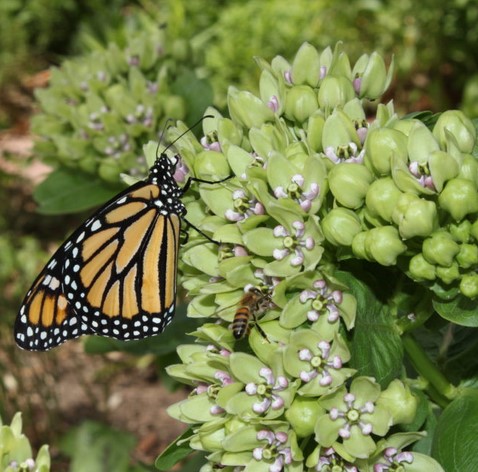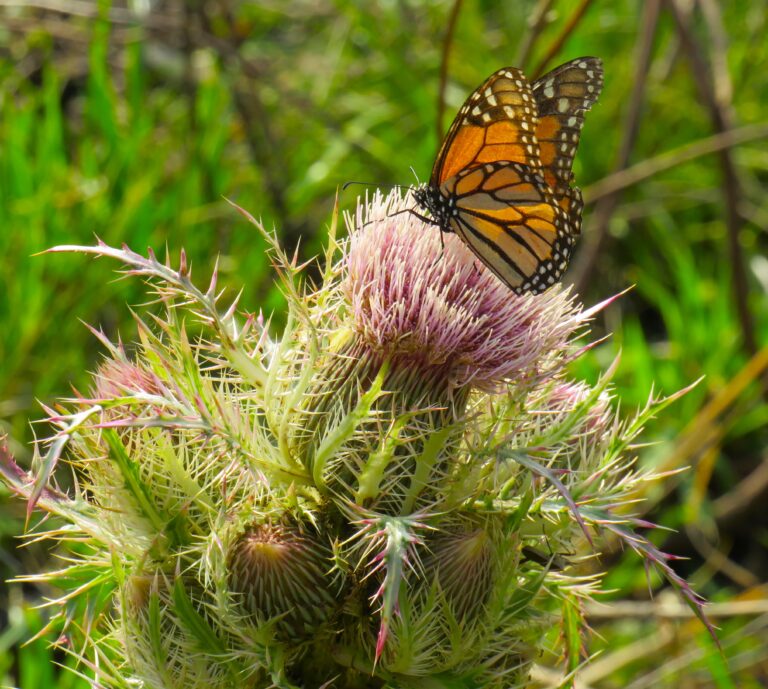The Monarch Butterfly and Butterfly Weed
All across this country we are seeing fewer and fewer of the beautiful Eastern Monarch Butterfly (Danaus plexippus). The same is happening with the Western Monarch. Both the World Wildlife Foundation and the U.S. Fish and Wildlife Service list them as being close to being an Endangered Species. Here in East Texas we especially notice it in October when they are returning from the north and heading back to Mexico to hibernate for the winter. The round trip to and from Mexico spans several generations for these large and colorful butterflies. We must do our part by providing the plants that sustain the various stages of their lives.
According to the World Wildlife Foundation the Monarch has the most highly evolved migration pattern of any known species of butterfly or moth. Their breeding ground route takes them from Mexico through East Texas and north over the Canadian border. Their return back to hibernation in Mexico brings them back through East Texas. We see them in the spring around March and April as they are beginning their 3,000 mile trip and again in October as they are returning and getting ready to cross the Gulf of Mexico to hibernate in Mexico.
In the spring we need to fill our gardens with a wide range of blooming plants including Butterfly Weed. Butterfly Weed is essential because the adult Monarch lays eggs on Milkweed exclusively and it is the only plant that the caterpillars will eat. Butterfly Weed will grow well in this area but three of the best are Green Antelope Milkweed (Asclepias viridis), Antelopehorn Milkweed (Asclepias asperula) and Zizotes Milkweed (Asclepias oenotheroides). Tropical Milkweed (Asclepias curassavica) blooms into the fall and will cause the butterflies to linger too long in this area and be killed by the cold temperatures of the late fall so use it carefully.
In the spring and summer we need to provide nectar flowers that will feed adults, and milkweed for the eggs, cocoons, and caterpillars. Usually 3 or 4 generations of butterflies will exist as they migrate to the north. Along with the Milkweed there need to be spring and summer blooming nectar producing flowering plants for the adults. Plants like salvia greggi, columbine, honeysuckle, coneflowers and tickseed. Pentas, phlox, Turks Cap, lantana, zinnias and mistflower will last through the summer and into the fall. Many more are listed in Dr. Jerry Parsons’ Plant Answers (PLANTanswers.com). In order to meet the demands of both the spring and fall migration choose plants that will bloom at different times in the season.
The adult Monarchs that leave the far north to return to Mexico have put reproduction on hold half way through their life cycle and are the same ones that return to Mexico. They do not lay eggs, but concentrate on the return 3,000 mile trip, around 50 miles a day. As they come through East Texas they need flowering nectar plants to sustain them through the last part of their journey. This is when we need late summer and fall blooming flowers like the salvias, lantanas, Turks Cap, gaura, and fall asters. At their destination in Mexico they congregate in trees, revealing acres of sleeping butterflies from November to March when they awaken and the whole amazing cycle repeats itself.
Smith County Master Gardeners are volunteer educators certified and coordinated by the Texas A&M AgriLife Extension Service.
Sheila Preddy
Smith County Master Gardener


